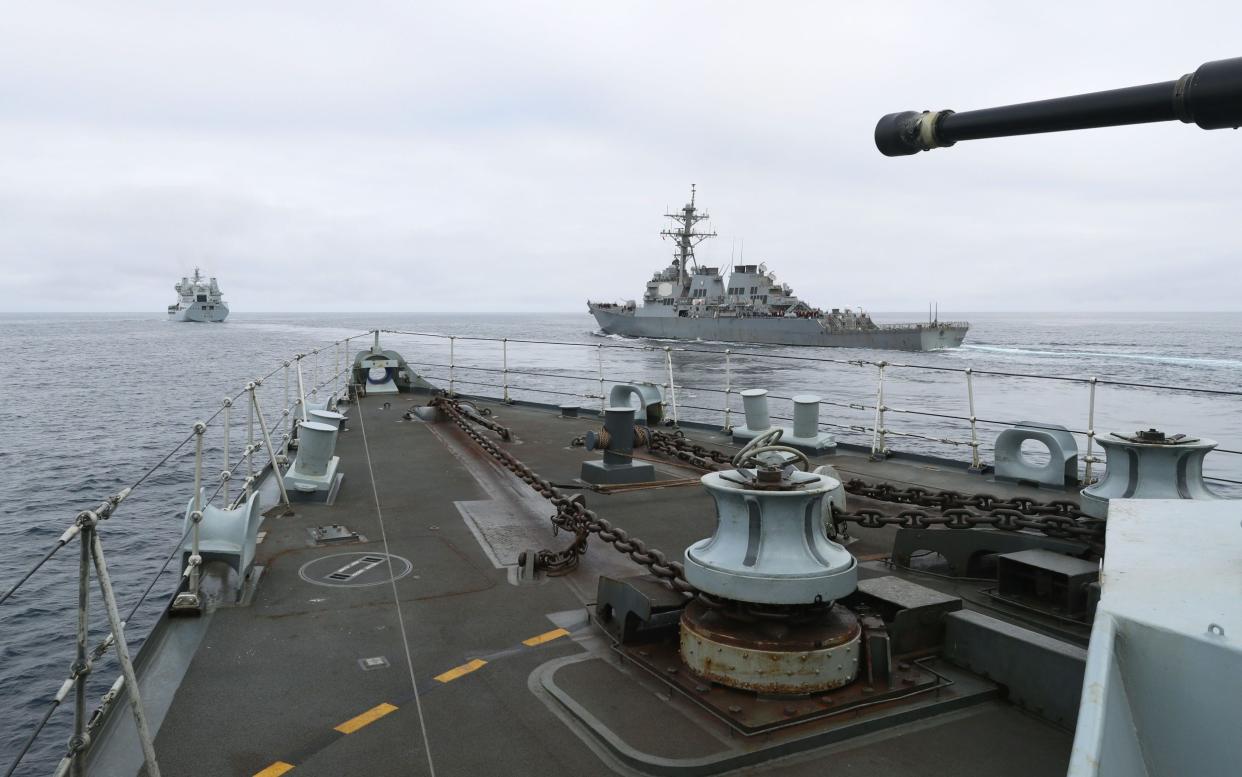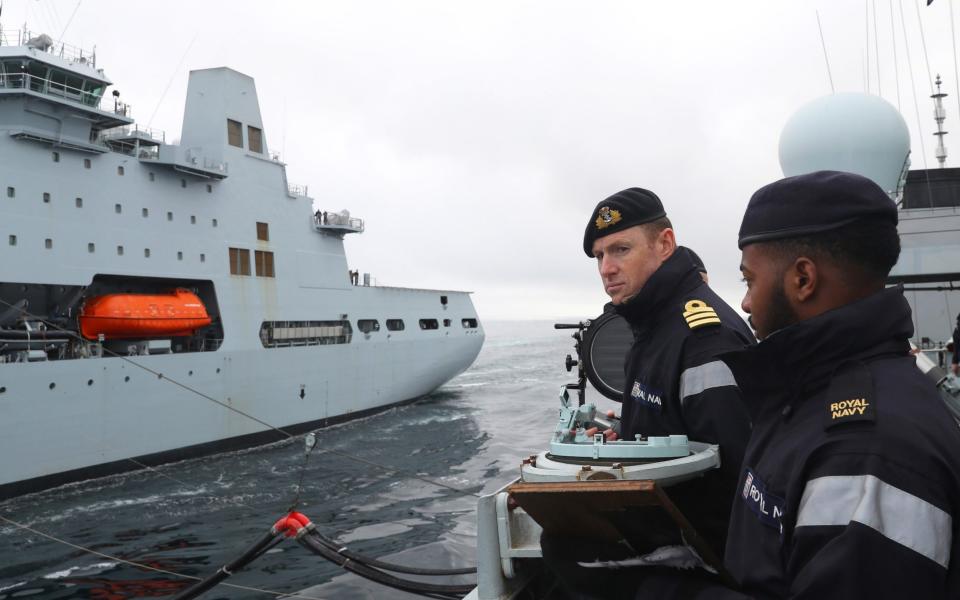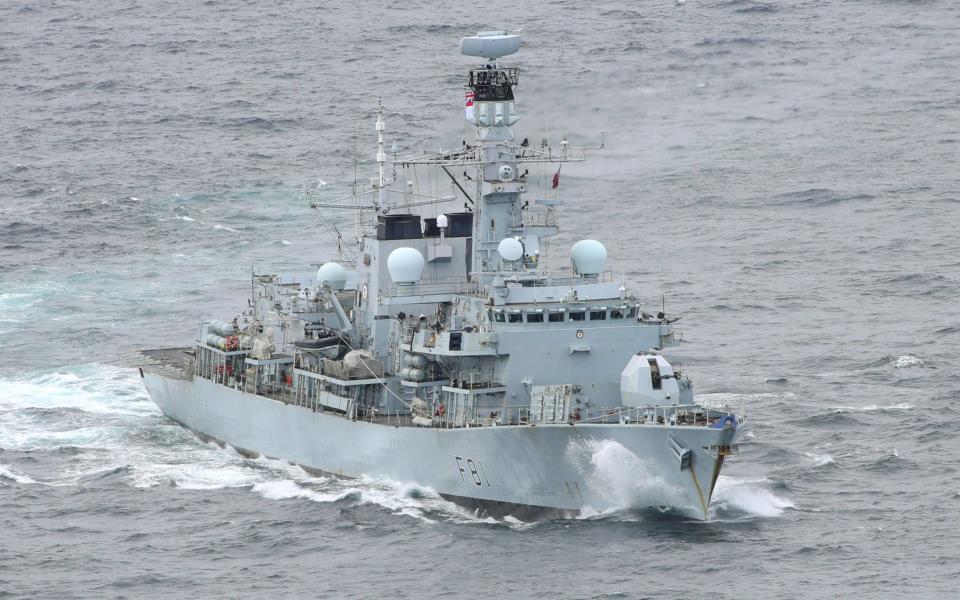Royal Navy leads four-nation Arctic mission to block Russian dominance

The Royal Navy has shown Russia it does not have freedom of the Arctic by leading a multi-national task group of warships and aircraft into the icy corridor of the High North.
In the first such operation for 20 years, Type-23 Frigate HMS Sutherland has been joined by American, Danish and Norwegian forces to demonstrate freedom of navigation above the Arctic Circle.
Defence Secretary Ben Wallace said Britain intends to “re-engage more” in the Barents Sea in future years.
He said the thawing of the passageways in the High North could cut the transit time of commercial shipping from China to Europe by half.
This could be very lucrative for some, but becomes an opportunity to challenge the norms of freedom of navigation for a country such as Russia that might feel “strategically vulnerable”.
HMS Sutherland, supported by the Royal Fleet Auxiliary logistics ship Tidespring, commanded a task group comprising the United States Navy’s Arleigh-Burke class destroyer USS Ross and the Norwegian Frigate Thor Heyerdahl on the deployment to the Barents Sea.
Over 1,200 military personnel from all four nations took part, supported by US P-8 Poseidon and Danish Challenger Maritime Patrol Aircraft.
RAF Typhoon fighters, supported by a Voyager refuelling tanker, also took part. British Typhoons have previously been based in Iceland, but have never before operated in the Arctic Circle.
HMS Sutherland led the ships through a demanding series of exercises, testing their abilities to conduct surface and anti-submarine warfare in one of the world’s most challenging environments.
Conducting routine tasks, such as replenishment at sea, in conditions close to freezing and in unfamiliar waters is a vital training exercise to ensure effective integration between allies.

Commander Tom Weaver, the Task Group Commander and Commanding Officer of HMS Sutherland, said: “It has been thoroughly rewarding to operate in the High North. This operation has been an amazing opportunity to hone the skills of my Ship’s Company not only in this challenging and demanding environment but also to work more closely with key allies in an incredibly important region.”
The Defence Secretary’s commitment to “re-engage more” in the Barents Sea highlights how the area is of great strategic interest to Nato.
The Russian Navy, which is mostly based around Murmansk in north west Russia, seeks to dominate the area as it controls the northern approaches to the Atlantic Ocean.
Access to the open seas is vitally important for Russia as it seeks to locate the British, French and American nuclear-missile carrying submarines widely thought to patrol the waters.

The seas linking Greenland, Iceland and the UK have long been recognised as a critical maritime region for Nato. If the Russian Navy can be contained above this line, Nato will have a much greater degree of freedom in the Atlantic.
A series of hydrophones, known as the Sound Surveillance System, is thought to lie on the sea bed, across what is known as the Greenland-Iceland-UK Gap. Although old technology, with much of the equipment understood to be in need of investment, the system is a potent weapon in Nato’s armoury.
The hydrophones are able to pick up the distinctive sounds of Russian ships and submarines, usually from the noise of the propellers.
These sounds are then analysed against other data such as photographs of naval exercises and port visits and can give Western intelligence analysts a clearer idea of which Russian Navy assets are attempting to get into the North Atlantic.
The Defence Secretary said Russia is also using the High North to experiment with new weapon systems, including submarines, and there is “lots for us to learn” in the area.
“It’s in our interest to protect the northern approaches. Being forward of your homeland is one way to ensure you protect that,” the Defence Secretary said.
In recent years the Russian military has fired long range missiles thousands of miles from ranges in the Arctic Ocean.
The current operation and future Royal Navy deployments will see ships operating less than 100 nautical miles of the Rusian coast.
As in the Black Sea, where Russia has unilaterally imposed military firing danger areas in an effort to intimidate Ukraine, so trying to control access and transit routes through the Arctic was “not an appropriate use” of exercise boxes and safety clearance areas, the Minister said.
He also warned Russia has asked countries to clear their route 48-hours before transit, an act that is not in line with international maritime law. Britain has not yet been asked to comply with such requests.
“The principle of upholding international maritime law, wherever that may be, is very important for a country like Britain that seeks to represent free trade,” Mr Wallace said.
The Defence Secretary said the Arctic will become part of the “normal area of operations” for the Royal Navy.
“It’s not designed to be provocative. It’s enlarging what we do, being more present and more forward”.
He said the possibility of forward-basing British military forces would be one of the themes of the ongoing Integrated Review into foreign, defence and security policy.
Watch: Yahoo UK Finance Reporter Edmund Heaphy explains what a no-deal Brexit actually means, and its potential consequences...


